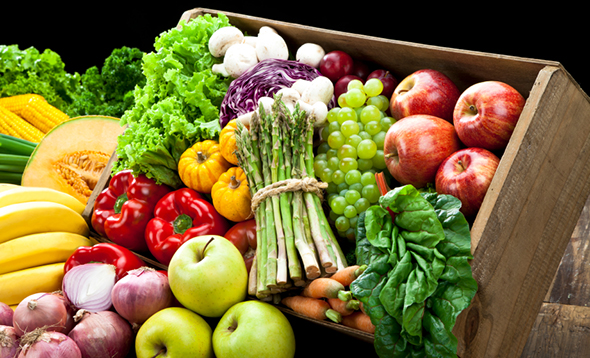That organic living is a conscious health choice
Nutrition Myths Debunked
- Low-fat foods aren’t making us skinnier
- Eliminating sugar from your diet isn’t enough
- Sometimes, frozen foods are better than fresh
We’re constantly bombarded by information on what we should and shouldn’t eat. The wealth of content available to us is overwhelming and even we sometimes get confused by all the nutritional dos and don’ts we’ve come to accept as truths. So, we decided to invest a little time in re-examining some common food myths and share what we’ve learnt with you.
In an interview with Oprah.com, Robert Lustig, the doctor whose lecture “Sugar: The Bitter Truth” went viral on YouTube observed that while actual fat intake has generally decreased, issues of obesity have grown exponentially because so much of what we eat today is processed low-fat foods. To make low-fat foods, manufacturers often have to increase the amount of sugar in their products to ensure that we continue to enjoy their taste and texture. And sugar makes us fat.
“Our fructose consumption has risen because of all the processed food we consume,” says the Professor of Clinical Pediatrics at University of California, San Francisco. “When we eat a lot of sugar, liver fat accumulates and our body releases insulin to compensate. Higher insulin levels promote fat storage, which can lead to obesity and a host of other, potentially lethal, diseases.”
Sadly, the fats we really should avoid are more likely to be found in low-fat foods. It’s man-made fats such as trans fats and hydrogenated oils in a wide range of processed foods (since they last longer than animal fat without going rancid) that pose significant health risks. These include higher risk of heart attack, diabetes and elevated low-density lipoprotein (LDL) or ‘bad’ cholesterol levels.
We know that sugar is bad. And we’re avoiding it like the plague. We also know that it’s ubiquitous. Call it fructose, honey, molasses or simply ‘added juices’, it sneaks its way into pre-prepared and processed foods. But it’s just as important to pay attention to the impact that the food (more specifically carbohydrate-containing foods) have on our blood sugar. This is measured using the Glycemic Index (GI). High GI foods are digested quickly and release a rapid burst of glucose into the bloodstream (resulting in a sugar high), while low GI foods break down more gradually, releasing glucose in a steady stream. A diet of low-GI foods decreases the risk of diabetes, cancer, heart disease, stroke and a range of other diseases. In general, whole foods (unprocessed, unrefined foods) are low or very low in GI value. Maintaining a diet rich in low GI foods is just as important as eliminating as much sugar in your diet as possible.
While canned vegetables and fruit tend to lose a significant amount of nutrients because they undergo preservation, frozen vegetables and fruit can sometimes be even healthier than fresh produce. Produce selected for freezing are often picked when they are at their peak, which is also when they are at their nutritional peak. Some vitamin C and B vitamins are lost when fruits and vegetables are steamed or blanched just before they’re frozen. But flash-freezing otherwise seals in a rich storehouse of nutrients.
In contrast, vegetables and fruits to be sold fresh are usually picked before they are ripe. This means that they have not had adequate time to attain their peak nutrition levels. Transportation (especially over long distances) also causes nutritional deterioration. So, if you’re buying in-season fresh produce, look for fresh and ripe specimens. But if you’re looking for off-season produce, frozen fruit and vegetables will actually be a rich source of nutrients.
Ultimately, the best way to ensure that we’re maintaining healthy diets that are best for our minds and bodies calls for an inquisitive mind and the desire to understand how what we eat impacts us. It’s only through actively seeking out more information that we can truly live well.


























_1672804154.jpg)

_1611290459.jpg)